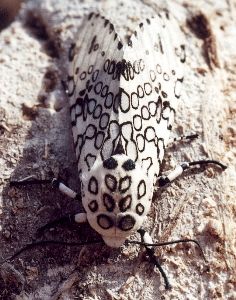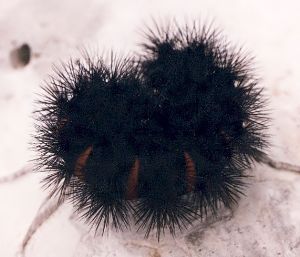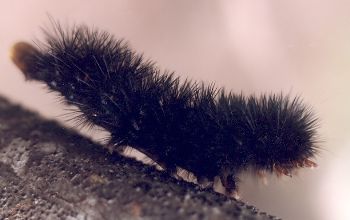Leopard Moth
by Valerie (June 19, 2000)
revised August 28, 2003

One of our most striking moths is the large black and white great leopard moth (Hypercompe scribonia). It belongs to a group called the tiger moths, of which there are about 200 species in the U.S. Most of these moths don't have functional mouthparts, their only purpose being to breed and lay eggs. I've never seen the leopard moth feeding, but am not sure whether or not it does; it's hard to tell since most moths are active at night anyway.
When the larva creates its cocoon, it mixes its spiny hairs with silk to make a tough covering. Although the caterpillars are large, they don't do much damage in the gardens because they are never very numerous. |



 The woolly bears get pretty large (up to about 2 inches long) and the bigger ones are all black, with dark red bands between segments. When threatened, the caterpillar usually rolls up into a ball with all its spines sticking out. However, some of the woolly bears are a bit more aggressive and will stretch out as if reaching to ward off an attacker. They also excrete feces, which is a common defensive action among caterpillars.
The woolly bears get pretty large (up to about 2 inches long) and the bigger ones are all black, with dark red bands between segments. When threatened, the caterpillar usually rolls up into a ball with all its spines sticking out. However, some of the woolly bears are a bit more aggressive and will stretch out as if reaching to ward off an attacker. They also excrete feces, which is a common defensive action among caterpillars.